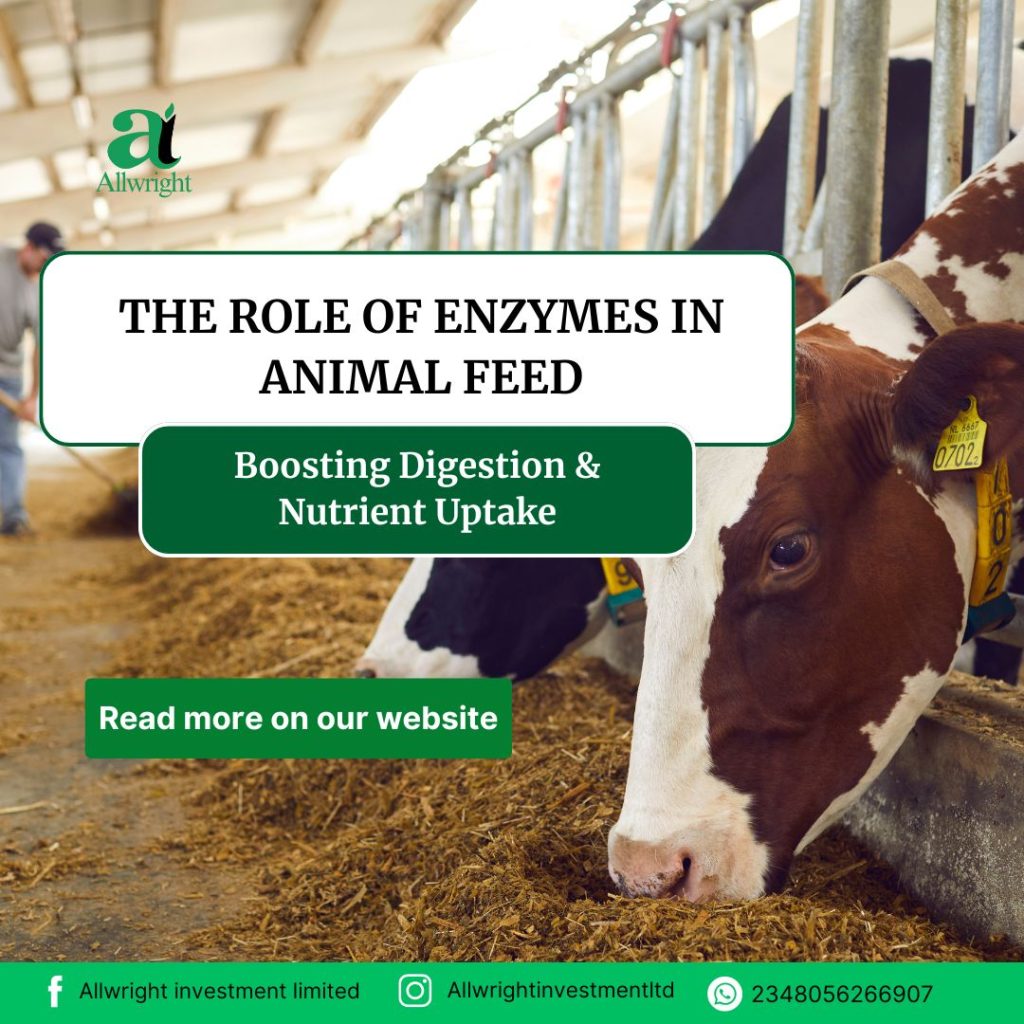
The Role of Enzymes in Animal Feed: Boosting Digestion & Nutrient Uptake
Enzymes are nature’s digestive catalysts—they break down complex feed components into absorbable nutrients that animals can actually use. When added to livestock diets, they enhance feed efficiency, reduce waste, and improve gut health.
In this guide, we’ll cover:
✔ How feed enzymes work
✔ The most important enzymes for livestock
✔ Proven benefits for cattle, poultry, and swine
✔ How to choose the right enzyme supplements
1. Why Enzymes Matter in Animal Feed
The Digestion Challenge
Many common feed ingredients contain anti-nutritional factors that animals struggle to digest:
- Phytate (in grains & oilseeds) binds phosphorus, making it unavailable
- Non-starch polysaccharides (NSPs) (in wheat, barley) increase gut viscosity
- Lignin & cellulose (in forages) limit fiber breakdown
Result: Up to 20-30% of feed nutrients pass undigested.
How Enzymes Help
Enzymes pre-digest these hard-to-break components, unlocking:
✔ More energy from carbs & fats
✔ Better protein absorption
✔ Increased mineral bioavailability
2. Key Feed Enzymes & Their Benefits
| Enzyme | Target Substrate | Key Benefits | Best For |
|---|---|---|---|
| Phytase | Phytate | Releases phosphorus, reduces mineral supplementation needs | Poultry, swine, aquaculture |
| Xylanase | Arabinoxylans (in wheat, corn) | Reduces gut viscosity, improves nutrient absorption | Poultry, pigs |
| β-Glucanase | β-glucans (in barley, oats) | Prevents sticky droppings, enhances digestion | Poultry, swine |
| Protease | Proteins | Breaks down anti-nutritional proteins (e.g., soybean trypsin inhibitors) | All livestock |
| Cellulase | Cellulose (in forages) | Improves fiber digestion in ruminants | Cattle, sheep, goats |
| Amylase | Starch | Boosts energy extraction from grains | Young animals, high-performance diets |
3. Proven Benefits of Enzyme Supplementation
✔ Improved Feed Efficiency
- Poultry trials: Xylanase increased ME by 5-7% in wheat-based diets
✔ Reduced Environmental Impact
- Phytase cuts phosphorus excretion by 30-50%
- Protease lowers nitrogen waste in manure
✔ Better Gut Health
- Enzymes reduce subclinical enteritis (leaky gut) in poultry
- Less undigested feed = lower pathogen growth (e.g., E. coli)
✔ Enhanced Performance
| Species | Result |
|---|---|
| Broilers | +4% weight gain, -5% FCR |
| Dairy cows | +1.5 kg milk/day with cellulase |
| Weaner pigs | 12% fewer scours cases |
4. How to Use Feed Enzymes Effectively
Choosing the Right Product
- Match enzymes to your base feed:
- Corn/soy diets: Phytase + protease
- Wheat/barley diets: Xylanase + β-glucanase
- High-forage rations: Cellulase + hemicellulase
- Opt for thermostable enzymes (survive pelleting at 80-90°C)
Dosing Guidelines
| Enzyme | Typical Dose |
|---|---|
| Phytase | 500-1,500 FTU/kg feed |
| Xylanase | 1,000-2,000 EXU/kg |
| Protease | 15,000-30,000 HUT/kg |
Note: Always follow manufacturer recommendations—overdosing wastes money.
Mixing Tips
✔ Premix with carriers (e.g., ground corn) for even distribution
✔ Add last in TMR mixing to avoid heat damage
✔ Store cool/dry (enzymes degrade in humidity)
5. Common Mistakes to Avoid
❌ Using single enzymes when blends work better
❌ Ignoring feed pH (some enzymes need acidic gut conditions)
❌ Assuming all enzymes work equally (source matters—fungal vs. bacterial)

Leave a comment
You must be logged in to post a comment.